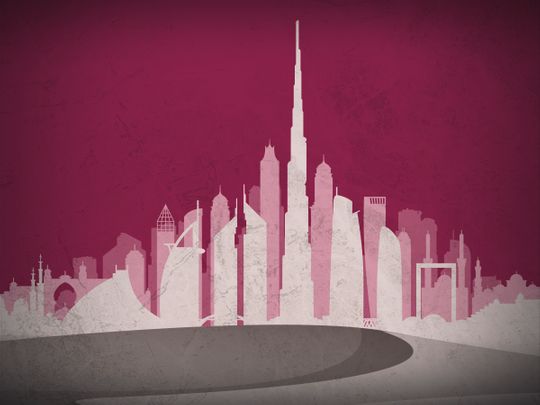
In a country not known for doing things by half, the UAE’s 50th birthday celebrations were impressive. Flags flew, fireworks exploded, the UAE Air Force aerobatic display team painted the skies red, green, white and black.
In the half-century since Sheikh Zayed of Abu Dhabi seized the opportunity presented by Britain’s sudden decision to end an imperial presence in the Gulf that dated back over a century and a half, the transformation of the former Trucial States has been astonishing.
Today, evidence of the success of that enterprise is everywhere, from the impossibly rapid transformation of Dubai and Abu Dhabi into the glittering metropolises of today, to the establishment of a once inhospitable stretch of barren desert, once a “hardship posting” for western soldiers and oilmen alike, as one of the world’s premier tourist destinations.
Pause and remember that all of this has been accomplished in less than a lifetime.
But what of the next 50 years?
On the eve of the celebrations, posing such a question might have seemed churlish.
As things stand, Fitch Ratings in November affirmed its all-important long-term Issuer Default Rating (IDR) for the country at “AA-” — a resounding vote of confidence in the UAE as “a very low default risk” for international lenders.
The crisis of climate change
In the words of one of the most recent, published in March in the journal “Climate and Atmospheric Science,” for the UAE, climate-change business as usual would mean that “in the second half of this century unprecedented super- and ultra-extreme heatwave conditions will emerge.”
In Abu Dhabi and Dubai, “the combined effect of high temperature and humidity is projected to reach or even exceed the thresholds.”
Of course, the UAE is not sleepwalking into disaster.
It is very well aware that it needs to replace its dependency upon fossil fuels with an expertise in renewables and other technologies that will allow it to remain an essential go-to energy partner.
All the alternative development and evolution away from fossil-fuel dependence costs money and, for now, the bulk of that money comes from the same oil and gas reserves that have brought the UAE so far in such a short time and which have brought the world to the edge of disaster.
The UAE has to find a way to balance its need for the short-term gains from fossil fuels with the existential imperative of reducing its own production of climate-change gases in line with the global ambition to slow and halt global warming.
It’s a tightrope that the country is confident of walking.
Net-zero greenhouse emissions
In October the UAE became the first of the Gulf oil states to set a target for net-zero greenhouse emissions, pledging to decarbonise its own economy by 2050.
The very next month the decision to name the UAE as host of the COP28 climate talks, due to take place in November 2023, came as an early golden anniversary gift.
It says something for the confidence of the UAE that it appears to be undaunted by the inevitable scrutiny to which its green credentials will be subjected over the coming two years.
There is no doubt that when the UAE reaches its 100th birthday in 2071, the face of Sheikh Zayed will be gazing down on a nation very different to the one that has just turned 50.
The foundations for that future are being laid right now. But exactly what form it will take, and what shape the country will be in, will be largely in the hands of a generation of Emiratis who, as children, took proudly to the streets on National Day in 2021.
The task the post-oil generation faces over the coming decades is going to be every bit as challenging as that confronted by Sheikh Zayed and his peers 50 years ago.
Jonathan Gornall is a British journalist, formerly with The Times, who has lived and worked in the Middle East and is now based in the UK.
Syndication Bureau










